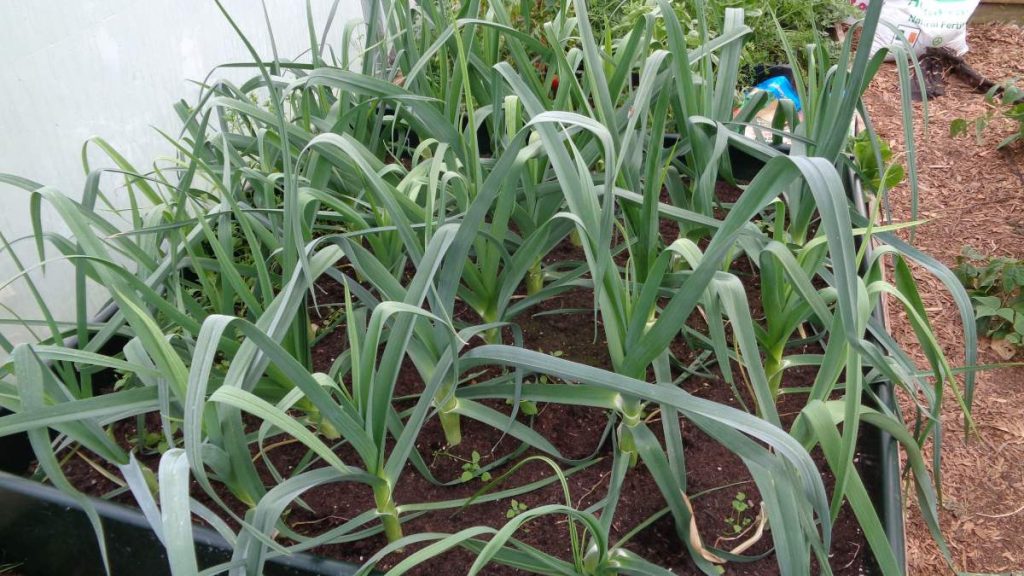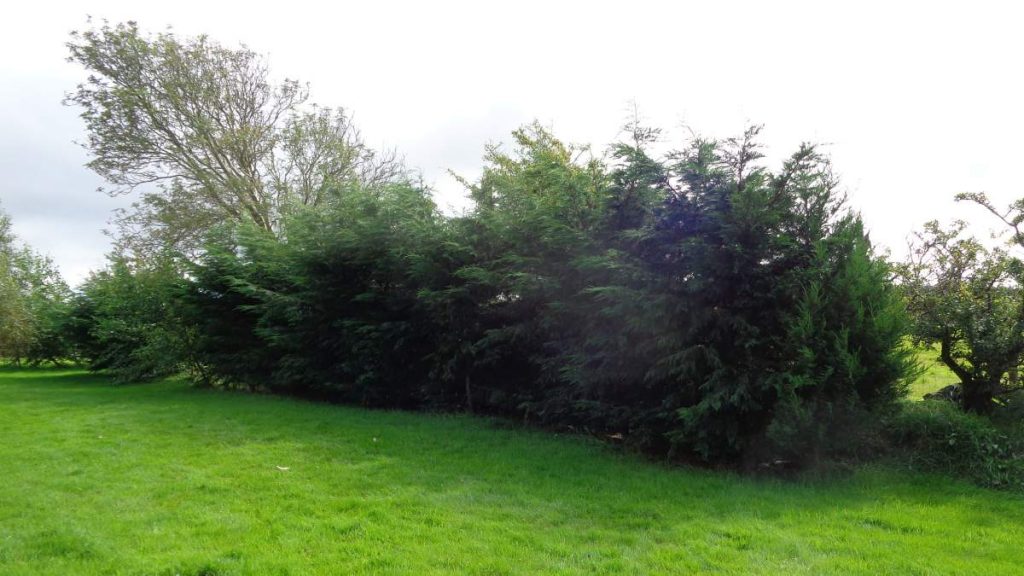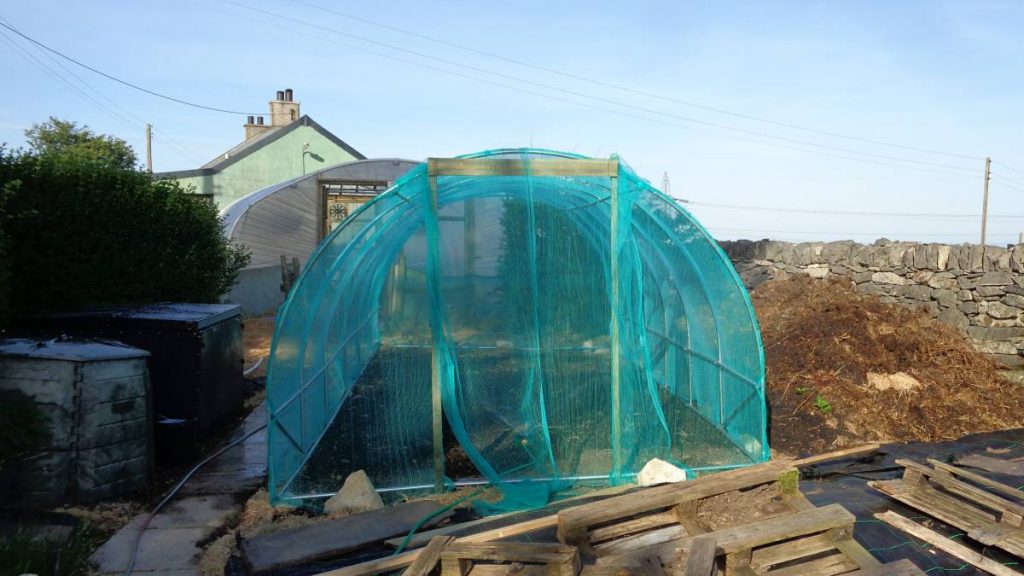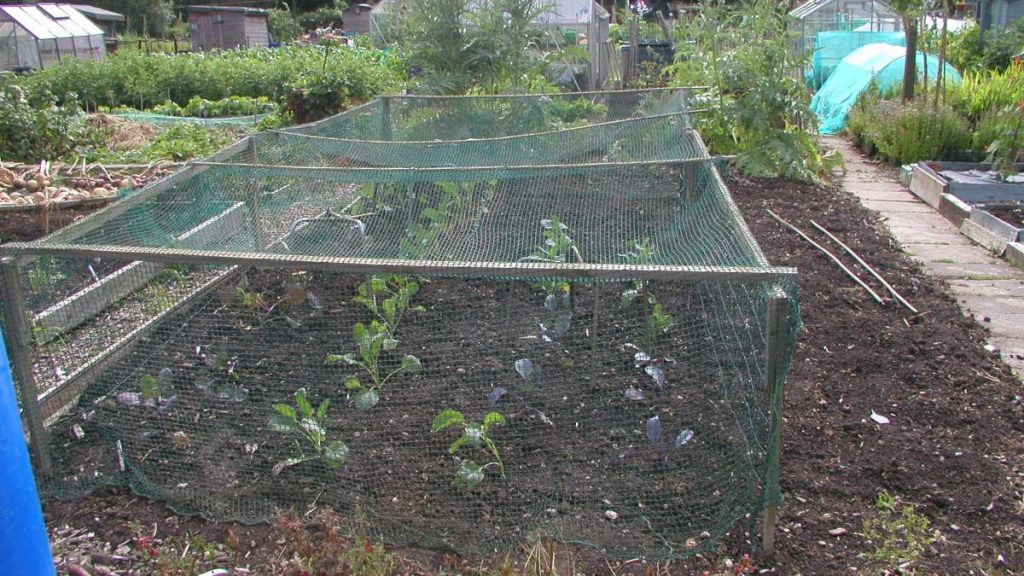Some thoughts on experimental growing to improve results in exposed areas using protected growing. Windbreaks, polytunnels and net tunnels.
Leeks
I thought I’d see how leeks did in the polytunnel compared with outside. The sheltered, warm environment being a plus although they do very well outside here. The answer is … an awful lot better. They’re much thicker and taller than ones planted outside at the same time. I suspect they’ll keep their lead as the season continues but a lot of people reckon leeks do better outside. We will see!
Experimental Growing
A lot of my growing is experimental. I think we’re going to need to produce a lot more of our own food in the future. To do this we will need to bring land into production that isn’t considered viable or economic today. Land like the uplands which currently only provide poor pasture for sheep and cattle.
Part of the answer here is manipulating the environmental conditions by means of windbreak hedging and trees or windbreak fencing. I prefer the hedging and trees solution as it’s more environmentally friendly but it takes longer to become effective and requires work annually with fast growing species.
I planted some of the infamous Cupressus × leylandii, the Leyland cypress. A nightmare in suburban gardens, blocking the sun and sucking water and nutrients from the ground. They can reach 40 feet in 15 years, even in poor soil.
Well, they’re a great windbreaker – we can feel the difference when we come into their shelter. The downside is keeping them under control. I need to take them down by three feet at the moment which is one of those jobs I must stop putting off.
Brassica Tunnel
Some low growing leafy brassicas like savoys will usually shrug off the winds but others, like Brussels sprouts, need staking or shelter, or both. Wind causes wind-rock where the plant’s root hairs are broken. Then the plant can’t absorb nutrients and starves in the midst of plenty. That’s where the brassica tunnel comes into its own.
My brassica tunnel is just a cheap steel polytunnel frame with debris netting attached. It provides a much better growing environment. It’s lightweight, so two people can move it to a new position each year. I say cheap, they’ve gone up this year but a 6m (20 ft.) x 3m (10 ft.) tunnel can still be had off Ebay for £150. I wouldn’t recommend them as a polytunnel for anywhere windy but the frame is fine for this. Go for galvanised rather than coated steel frame. A bit more money but they last twice as long.
As well as helping with wind, the brassica tunnel shades scorching sunlight which can sometimes be a problem. Sadly not too often here! More usefully, the reduced wind speed means the wind chill factor is reduced. This effectively provides warmer growing conditions without hot air over-heating the plants.
Perhaps the biggest benefit to many would be that the brassica tunnel keeps out butterflies so avoiding the summer ‘caterpillars ate my cabbages’ problem.
Because most of the wind goes through the netting, the forces are far less than those exerted on a solid skinned tunnel. Hence the cheap polytunnel frames are strong enough even for here. As a polytunnel, the cheap ones are worth considering in sheltered areas but forget them in windswept uplands.
Of course you can just net your brassicas but it’s a lot easier to work in the tunnel rather than fiddling about to open up netting attached to hoops or frames.








That brassica tunnel looks the business, John. We planted five raised beds with brassicas, two with cauliflowers, two with cabbage and one with Brussels. Covered them with mesh, sprayed with insect spray but lost all the cauliflowers, They just went to seed but all the other brassicas were OK.
I might consider buying a brassica tunnel because it sounds like a good idea for growing brassicas but we would need to put it down the allotments as there’s not enough space at our home garden for one. Although it’s a bit windy down the allotments but I don’t think that would be a problem
it sounds like you’re pleased with your poly tunnel and your comments regarding the poly tunnel are well worth noting. I’m going to give that some thought for next season, John